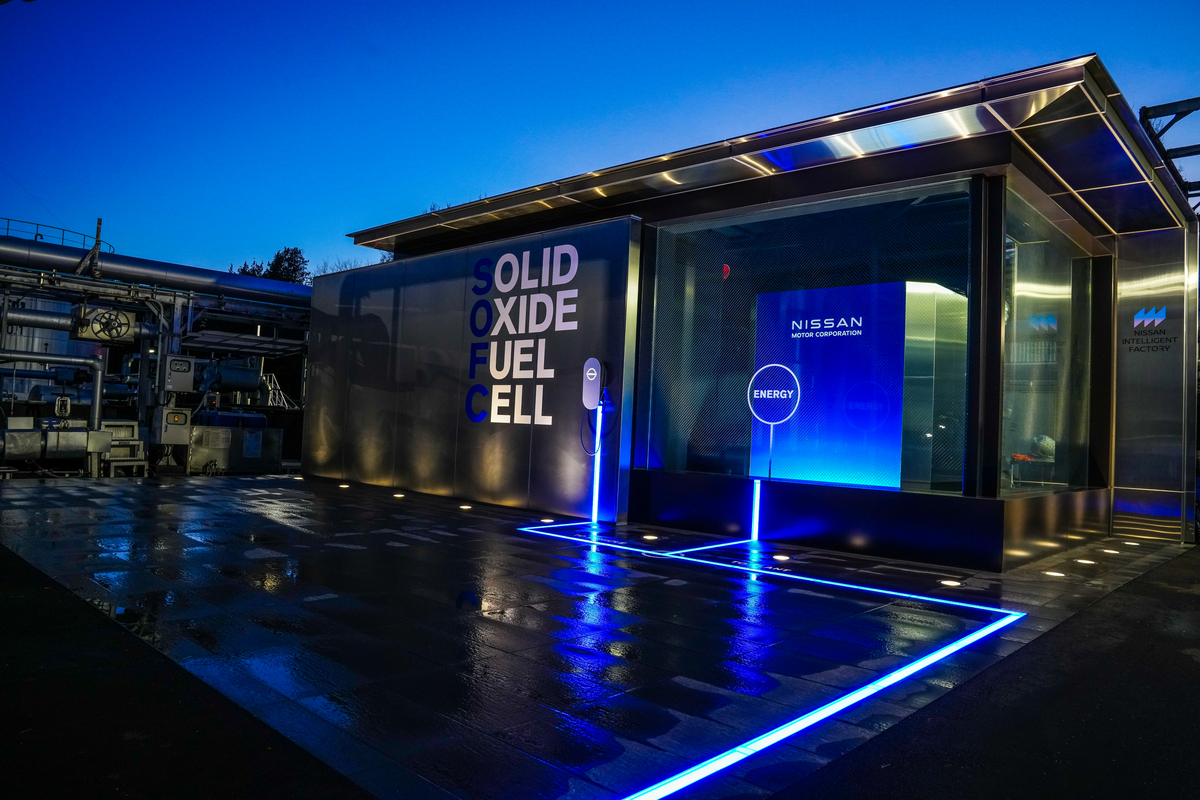
Nissan announced today that it has developed a stable bioethanol system capable of producing energy with a high degree of efficiency. Testing has begun at Nissan's Tochigi plant in Japan, with the aim of improving power generation capacity to bring the system to full scale by 2030.
In 2016, Nissan became the first car company in the world to create a vehicle propulsion system powered by a solid oxide fuel cell (SOFC) fuelled by bioethanol. Nissan is now applying this SOFC development experience to stationary power generation systems.
Features of SOFC
SOFCs can be easily combined with reformers operating at high temperatures and can generate electricity using hydrogen obtained from the reforming of various types of oxygen-reactive fuels, including ethanol, natural gas and liquefied petroleum gas (LPG). High temperature operations promote high catalytic activity, allowing the SOFC to achieve a high power generation efficiency of 70%, compared to 60% for polymer electrolyte fuel cells (PEFCs).
In the future, the development of a metal-backed cell, which is a component of the SOFC stack, will help to enhance the strength of the cell. As a result, start-up and shutdown times can be shortened and downstream operations can respond to sudden fluctuations in energy demand. This will allow the SOFC system to operate efficiently in the future, when it is expected that the system will be used in conjunction with renewable energy sources.
Supply of raw sugar grass bioethanol
The stationary power generation system will be powered by bioethanol produced from sugarcane, which has been jointly developed with Binex Inc. and fueled by Binex. This component will be launched by 2025.
Although sugarcane bioethanol emits CO2 during SOFC energy production, this CO2 is absorbed from the atmosphere during the development process, helping to realize a carbon neutral cycle where CO2 increases are reduced to essentially zero.
Characteristics of sugar grass
1) An annual herbaceous plant of the grass family that grows rapidly and can be harvested in about 3 months, allowing multiple harvests each year when grown in suitable conditions.
2) Due to its adaptability to cold and dry areas, it can be grown in a wide range of regions and different soils.
3) The stalk is used as a raw material for ethanol and the grain is used for food, i.e. there is no competition with food production.
4) Stem waste after crushing can also be used in biomass energy production.
Kazuhiko Murata, corporate vice president in charge of Engine Engineering and Production Development, says: "There are significant changes in the transition from the internal combustion engine to electric vehicles. Nissan is facing various technology development challenges in new areas, and SOFC power generation is one of our strengths. We will continue to contribute to the advancement of electrification and carbon neutrality efforts with Nissan's unique, innovative technologies."
Nissan is committed to achieving carbon neutrality in all operations and the life cycle of the company's products by 2050.
The aim is to fully electrify the facilities' equipment by 2050 through the introduction of innovative production technologies and by reducing energy use. In order to achieve carbon neutrality in the generation plants, all electricity used will be generated from renewable energy sources or produced by fuel cells using alternative fuels.






